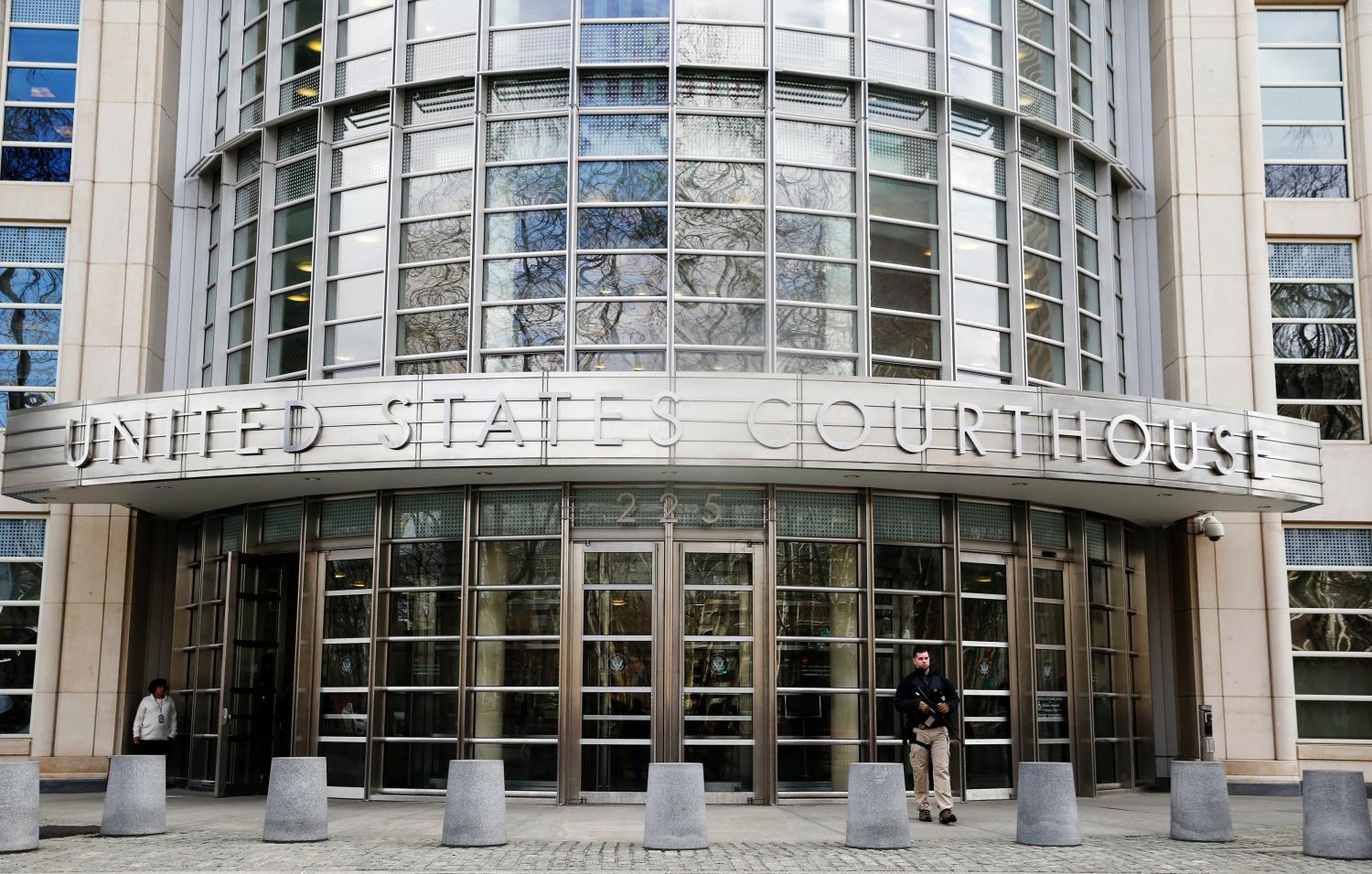The following is part of the Series on Counterterrorism and American Statutory Law, a joint project of the Brookings Institution, the Georgetown University Law Center, and the Hoover Institution
Introduction
It is a slight exaggeration to say that Barack Obama is the first president in American history to have run in part on a political platform of targeted killings—but not much of one. During the campaign, he openly sought to one-up the Republican nominee, Sen. John McCain, in his enthusiasm for the use of targeted strikes in Pakistan against al Qaeda figures. “You know,” he said in his speech at the Democratic National Convention, “John McCain likes to say that he’ll follow [Osama] Bin Laden to the Gates of Hell, but he won’t even go to the cave where he lives.”[i] That he would, as president, follow bin Laden to his cave, with or without the cooperation of the Pakistani government, he made perfectly clear. “If we have actionable intelligence about high-value terrorist targets and President [Pervez] Musharraf won’t act, we will,” he said in another speech.[ii] Indeed, while he criticized President Bush for being too aggressive in many aspects of counterterrorism, with respect to targeted killings, his criticism was the polar opposite: “The Bush administration has not acted aggressively enough to go after al Qaeda’s leadership,” he said. “I would be clear that if Pakistan cannot or will not take out al Qaeda leadership when we have actionable intelligence about their whereabouts, we will act to protect the American people. There can be no safe haven for al Qaeda terrorists who killed thousands of Americans and threaten our homeland today.”[iii]
Obama did not take long, on assuming office, to begin keeping his promise. On January 23, 2009 a mere three days into his presidency, strikes by Predator drones in the tribal areas of Pakistan destroyed two compounds and killed numerous people, reportedly including a high-value target.[iv] Strikes continued, even expanded, over the successive months, and administration officials made clear that they had no plans to curtail them—even as they reined in coercive interrogations and announced the closure of Guantánamo Bay.[v]
Obama was right as a candidate and is correct as president to insist on the propriety of targeted killings—that is, the targeting of a specific individual to be killed, increasingly often by means of high technology, remote-controlled Predator drone aircraft wielding missiles from a stand-off position. The strategic logic that presses toward targeted stand-off killing as a necessary, available and technologically advancing part of counterterrorism is overpowering. So too is the moral and humanitarian logic behind its use. Just as crucial programs of Predator-centered targeted killing are underway now in Afghanistan and, with increasing international controversy, Pakistan, over the long term these programs of stand-off targeted killing will be an essential element in United States counterterrorism into the future—and with targets having little or nothing to do with today’s iteration of the war on terror.[vi] Future administrations, even if they naturally prefer to couch the matter in softer terms, will likely follow the same path. Even if the whole notion seems to some disturbingly close to arbitrary killing, not open combat, it is often the most expedient—and, despite civilian casualties that do occur, most discriminatingly humanitarian—manner to neutralize a terrorist without unduly jeopardizing either civilians or American forces.
But there’s a paradox in Obama’s embrace of targeted killing: Even as the strategic and humanitarian logic for it increases in persuasiveness, the legal space for it and the legal rationales on which it has been traditionally justified are in danger of shrinking. They are at risk of shrinking in ways that might surprise members of Congress and the Obama Administration. And they are at risk of shrinking through seemingly innocuous, unrelated legal policy actions that the Obama Administration and Congress might be inclined to take in support of various political constituencies, usually related to broadly admirable goals of human rights and international law.
American domestic law—the law codifying the existence of the CIA and defining its functions—has long accepted implicitly at least some uses of force, including targeted killing, as self-defense toward ends of vital national security that do not necessarily fall within the strict terms of armed conflict in the sense meant by the Geneva Conventions and other international treaties on the conduct of armed conflict. Categories of the use of force short of armed conflict or war in a juridical sense—by intelligence services such as the CIA, for example—or by military agents in furtherance of national self defense and vital security interests, yet outside of the legal condition of armed conflict, date back in codified law to the founding of the CIA and, in state practice by the United States and other sovereigns, far further still. Yet as a matter of legal justification, successive administrations have already begun to cede this ground. Even the Bush Administration, with its unrivaled enthusiasm for executive power, always sought to cast its killing targets as the killing of combatants in what it legally characterized as armed conflicts, governed by the laws of war on the conduct of hostilities, known as “international humanitarian law” (IHL). This concession, however, if followed by the Obama Administration and beyond, will likely reduce the practical utility of a policy and security tool of both long-standing provenance and proven current value. It will likely reduce the flexibility of the United States to respond to emerging threats before they ripen into yet another war with non-state terrorists, and it will reduce the ability of the United Sates to address terrorist threats in the most discriminating fashion advancing technology permits.
At this moment in which many policymakers, members of Congress and serious observers see primarily a need to roll back policies and assertions of authority made by the Bush Administration, any call for the Obama Administration and Congress to insist upon powers of unilateral targeted killing and to claim a zone of authority outside of armed conflict governed by IHL that even the Bush Administration did not claim must seem at once atavistic, eccentric, myopic and perverse. Many will not much care that such legal authority already exists in international and U.S. domestic law. Yet the purpose of this chapter is to suggest that, on the contrary, the uses to which the Obama Administration seeks to put targeted killing are proper, but they will require that it carefully preserve and defend legal authorities it should not be taking for granted and that its predecessors, including the Bush Administration, have not adequately preserved for their present day uses.
People who threaten serious harm to the United States will not always be al Qaeda, after all. Nor will they forever be those persons who, in the words of the Authorization for the Use of Military Force (AUMF), “planned, authorized, committed or aided” the attacks of September 11.[vii] As I will explain, it would have been better had the Bush and Clinton Administrations, for their parts, formulated their legal justifications for the targeted uses of force around the legal powers traditionally asserted by the United States: the right of self-defense, including the right to use force even in circumstances not rising to the level of an “armed conflict” in order to have firmly fixed in place the clear legal ability of the United States to respond as it traditionally has. Although the United States still has a long way to go to dismember al Qaeda, its affiliates and subsidiaries, although Osama bin Laden and key al Qaeda terrorist leaders remain at large, and although the President of the United States still exercises sweeping powers both inherent and granted by Congress to use all national power against the perpetrators of September 11, time moves on. New threats will emerge, some of them from states and others from non-state actors, including terrorist organizations. Some of those new threats will be new forms of jihadist terrorism; others will champion new and different causes. Even now, Islamist terror appears to be fragmenting into loose networks of shared ideology and aspiration rather than tightly vertical organizations linked by command and control.[viii] It will take successive feats of intellectual jujitsu to cast all of the targets such developments will reasonably put in the cross hairs as, legally speaking, combatants.
Yet the problem is still deeper and more immediate than that, for the accepted space for targeted killings is eroding even within what a reasonable American might understand as the four corners of our conflict with al Qaeda. In many situations in which any American president, Obama certainly included, would want to use a targeted killing, it is unclear to some important actors—at the United Nations, among our allies, among international law scholars, and among NGO activists—as a matter of international law that a state of armed conflict actually exists or that a targeted killing can qualify as an act of self-defense. The legal situation, therefore, threatens to become one in which, on the one hand, targeted killing outside of a juridical armed conflict is legally impermissible and, on the other hand, as a practical matter, no targeted killing even within the context of a “war” with al Qaeda is legally permissible, either.
Congress’s role in this area is admittedly a peculiar one. It is mostly—though not entirely—politically defensive in nature. After all, the domestic legal authorities to conduct targeted killings and other “intelligence” uses of force have existed in statutory form at least since the legislation that established the Central Intelligence Agency in 1947 and in other forms long pre-dating that.[ix] The problem is that although domestic legal authority exists for the use of force against terrorists abroad, currents are stirring in international law and elsewhere that move to undermine that authority. Powerful trend and opinion-setting—so-called “soft law”—currents are developing in ways that, over time, promise to make the exercise of this activity ever more difficult and to create a presumption, difficult to overcome, that targeted killing is in fact both illegitimate and, indeed, per se illegal except in the narrowest of war-like conditions. The role of Congress is therefore to reassert, reaffirm, and reinvigorate the category as a matter of domestic law and policy, and as the considered, official view of the United States as a matter of international law.
[i] Barack Obama, “The American Promise” (speech, Democratic National Convention, Denver, CO, August 28, 2008).
[ii] Barack Obama, “The War We Need to Win” (speech, Woodrow Wilson International Center for Scholars, Washington, DC, August 1, 2007).
[iii] Karen DeYoung, “Obama Tends Toward Mainstream on Foreign Policy,” Washington Post, March 3, 2008, A07; full text of questionnaire responses available at http://www.themorningleader.lk/20080611/interviews.html.
[iv] R. Jeffrey Smith, Candace Rondeaux and Joby Warrick, “2 U.S. Airstrikes Offer a Concrete Sign of Obama’s Pakistan Policy,” Washington Post, January 24, 2009, A01.
[v] See Mark Mazzetti and David E. Sanger, “Obama Expands Missile Strikes inside Pakistan,” New York Times, February 21, 2009, A1; Karen DeYoung and Joby Warrick, “Drone Attacks inside Pakistan Will Continue, CIA Chief Says,” Washington Post, February 26, 2009, A10; David E. Sanger and Eric Schmitt, “U.S. Weighs Taliban Strike into Pakistan,” New York Times, March 18, 2009, A1; Pir Zubair Shah, “Missile Strike Kills 4 in Pakistan,” New York Times, March 16, 2009; Jay Solomon, Siobhan Gorman and Matthew Rosenberg, “U.S. Plans New Drone Attacks in Pakistan,” Wall Street Journal, March 26, 2009; Pir Zubair Shah and Alan Cowell, “Missile Strike Said to Kill 10 in Pakistan,” New York Times, April 1, 2009, A10; Robert Birsel, “U.S. Missile Kills 13 in Pakistan,” Reuters, April 4, 2009; Eric Schmitt and Christopher Drew, “More Drone Attacks in Pakistan Planned,” New York Times, April 6, 2009, A15; Nahal Toosi, “Suspected U.S. Missile Kills 3 in Northwest Pakistan,” Associated Press, April 8, 2009; Jane Perlez, “Pakistan Rehearses Its Two-Step on Airstrikes,” New York Times, April 16, 2009, A10.
[vi] See Habibullah Khan and Nick Schifrin, “Allegations that CIA Predator Drones Have Bases in Pakistan,” ABC News, February 23, 2009, available at http://abcnews.go.com/International/story?id=6938365&page=1. See also Pir Zubair Shah, “U.S. Airstrike Kills 21 in Pakistan,” New York Times, March 14, 2009, A8; Simon-Cameron Moore, “U.S. Missile Strike in Pakistan Hit al Qaeda Nest,” Reuters, January 31, 2008.
[vii]Authorization for Use of Military Force, Public Law 107-40, 107th Cong., 1st sess. (September 18, 2001), §2(a).
[viii] See, e.g., Mark Sageman, Leaderless Jihad: Terror Networks in the Twenty-First Century (Philadelphia: University of Pennsylvania Press, 2008).
[ix]National Security Act of 1947, 50 U.S.C. 401.
The Brookings Institution is committed to quality, independence, and impact.
We are supported by a diverse array of funders. In line with our values and policies, each Brookings publication represents the sole views of its author(s).



